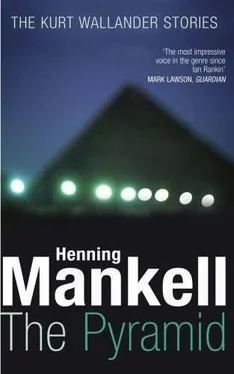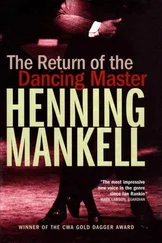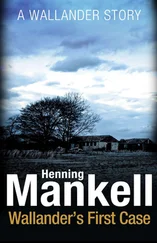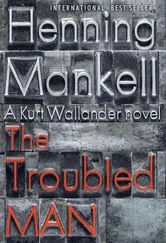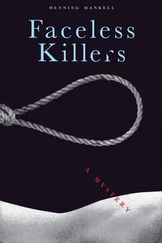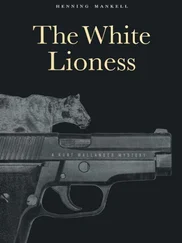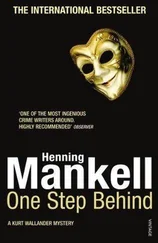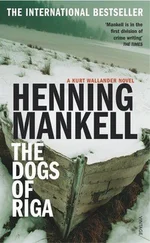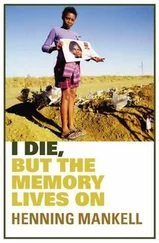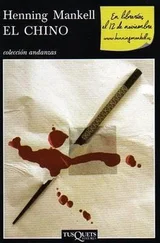'Rydberg always gets better after a week or so,' Wallander said.
They parted ways. Wallander returned to his room. Since the news of the murder had now spread, Ebba was able to give him the message that several reporters had called and asked when they would be able to get information. Without consulting anyone, Wallander announced that he would be available to answer questions at three o'clock.
Afterwards he devoted an hour to writing a summary of the case for himself. He had just finished when Nyberg called to say that Wallander could now start investigating the back room. Nyberg had still not made any noteworthy discoveries. Nor could the medical examiner state anything other than that Lamberg had been killed by a violent blow to the back of the head. Wallander asked if they could say something about the kind of weapon that had been used at this stage. But it was too early for an answer. Wallander ended the conversation and his thoughts returned to Rydberg. His teacher and mentor, the most skilled detective he had ever met. He had taught Wallander how impor t ant it was to turn and twist one's arguments and approach a problem from an unexpected angle.
I could have used him right now, Wallander thought. Maybe I should call him at home tonight.
He walked to the break room and drank yet another cup of coffee. Carefully munched on a rusk. The pain in his tooth did not return.
Since he felt tired from his interrupted sleep the night before, he took a walk down to St Gertrude's Square. The drizzling rain continued. He wondered when spring was coming. Our collective Swedish impatience in April is very high, he thought. Spring never seems to come at the right time. Winter always comes too early and spring too late.
Several people were gathered outside Lamberg's shop. Wallander knew some of them or at least had seen their faces before. He nodded and said hello. But he did not answer any questions. He stepped over the police tape and walked into the shop. Nyberg was standing with a Thermos mug in his hand, arguing with one of his technicians. He did not stop when Wallander walked in. Only when he had finished saying his piece did he turn to Wallander. He pointed towards the studio. The body had been removed. There was only the large bloodstain on the white background paper. An artificial trail of plastic had been laid out.
'Walk there,' Nyberg instructed. 'We found a lot of footprints in the studio.'
Wallander pulled plastic booties over his shoes, slipped some rubber gloves into his pocket, and carefully walked into the room that had served as a combination office and developing room.
Wallander remembered how he, when he was very young, perhaps fourteen or fifteen years old, had nourished a passionate dream of becoming a photographer. But he did not aspire to have his own studio; he was going to be a press photographer. At all great events he would be there on the front lines and he would take his pictures while others took pictures of him.
As he stepped into the inner room he wondered where that dream had gone. It had suddenly just left him. Today he owned a simple Instamatic that he rarely used. Several years later he wanted to become an opera singer. Nothing had come of that either.
He removed his coat and looked around the room. From the studio he could hear that Nyberg had started arguing again. Wallander heard vaguely that it was about a sloppy measurement of the distance between two footprints. He walked over to the radio and turned it on. Classical music. Lamberg walked down to the studio sometimes in the evenings, Hilda Waldén had said. To work and to listen to music. Classical music. So far so good. He sat down at the desk. Everything was carefully arranged. He lifted the green writing pad. Nothing. Then he stood up and walked out to see Nyberg and ask if they had found any keys. They had. Wallander put on his rubber gloves and walked back. He searched for the right key to open the desk cabinet. In the top drawer there were various tax documents and other correspondence with Lamberg's accountant. Wallander gingerly leafed through the papers. He was not looking for anything in particular. Therefore anything could turn out to be important.
He went drawer by drawer methodically. Nothing caught his eye. So far Simon Lamberg's life was a well-organised one, without secrets, without surprises. But he was still only scraping the surface. He bent down and and pulled out the lowest drawer. There was just a photo album inside. The cover and binding were made of a luxurious leather. Wallander put it on the desk in front of him and turned to the front page. He studied the single snapshot with a furrowed brow. It was no larger than a passport photograph. Wallander had noticed a magnifying glass in one of the other drawers he had searched. Now he located it again, turned on one of the two desk lamps, and studied the image more closely.
It was a picture of the American president, Ronald Reagan. But it was deformed, the face had been distorted. It was still Ronald Reagan. And yet not. The wrinkled old man had been turned into a horrifying monster. Right next to the picture there was a date written in ink: 10 August 1984.
Wallander turned the page hesitantly. The same thing. A single snapshot glued onto the middle of the page. This time it featured one of Sweden's former prime ministers. The same deformed, misshapen face. A date written in ink.
Without studying each picture in detail, Wallander slowly made his way through the album. On every page a single shot. Misshapen, deformed. Men – they were exclusively men – remade into revolting monsters. Swedish as well as foreign. Mainly politicians but also some businessmen, an author and a few others that Wallander did not recognise.
He tried to understand what the images communicated. Why did Simon Lamberg have this uncommon photo album? Why had he distorted the pictures? Was it in order to work on this album that he had spent his evenings at the studio alone? Wallander had increased his concentration. Behind Simon Lamberg's well-ordered facade there was obviously something else. At least a man who deliberately destroyed the faces of well-known people.
He turned another page. Winced. An acute discomfort radiated through his body.
He had difficulty believing it was true.
At that moment Svedberg came into the room.
'Look at this,' Wallander said slowly.
Then he pointed at the picture. Svedberg bent over his shoulder.
'That's you,' he said with amazement.
'Yes,' Wallander answered. 'It's me. Or at least maybe.'
He looked at it again. It was a photograph from a newspaper. It was him, and yet it wasn't. He looked like an unusually abominable individual.
Wallander could not think of a time when he had been so shaken. The distorted and grotesque depiction of his face nauseated him. He had certainly been the object of verbal assaults from criminals he had arrested, but the thought that someone had spent hours producing this hate-picture of him was frightening. Svedberg registered his reaction and went to get Nyberg. Together they went through the album. The last picture was from the day before, when the Swedish prime minister had had his face destroyed. The date was written in next to it.
'The person who did this has to be sick,' Nyberg said.
'There's no doubt that it is Simon Lamberg who has spent his evenings on these photographs,' Wallander said. 'What I am naturally wondering is why I've been included in this macabre collection. The only person from Ystad, no less. Among men of state and presidents. I won't deny that I find it very disturbing.'
'And what is the purpose?' Svedberg asked.
No one had any reasonable answer to offer.
Wallander felt he had to leave the studio. He asked Svedberg to take over an examination of the room. For his part, he would soon have to give the press the information they were waiting for. By the time he was back out on the street, his nausea was clearing up. He stepped over the police tape and went straight to the police station. It was still drizzling. Even though the nausea had passed, he felt ill at ease.
Читать дальше
